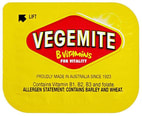SCENT WORK FOR DOGS
Now you and your dog can enjoy a new way to have fun together, anywhere, anytime. Scent work, often called nose work, is one of the hottest new trends in dog training, teaching pet dogs to recognise and search for specific scents. The best thing about scent work is that it can be done by any dog and handler. It does not require a lot of room and it teaches people to appreciate their dog’s amazing sense of smell as they watch them search for the trained odours.
Scent work is very beneficial for dogs as it burns off both physical and mental energy in a safe environment.
Scent work is very beneficial for dogs as it burns off both physical and mental energy in a safe environment.
TEACHING VEGEMITE AS THE TARGET ODOUR.
In competition Scent Work, the dogs search for essential oils Birch, Anise, Clove and Cypress but you can begin now by teaching your dog to find Vegemite. It doesn't matter if toast and Vegemite is one of their favourite breakfast treats. It doesn't matter if you eventually want to go on to competition because it's very easy to teach the dog other odours. Think about the Quarantine dogs at the airport looking for fruit and nuts and other plant materials in traveler's bags. They can identify hundreds of different odours.
HOW TO BEGIN. To teach the dog what we want him to find, use a Vegemite breakfast sachet (available in local supermarkets) and slightly tear the corner. Hold the sachet in the palm of your hand and a food reward in the other closed hand. Wait for the dog to investigate the Vegemite satchet and when the dog's nose is close (mark with a YES). Then bring the other hand across and feed several pieces of food right on the target odour (Vegemite). If the dog goes to the food in the other hand, keep your hand tightly closed and do nothing and say nothing. The dog will learn that leaving the food in your hand and going to the Vegemite will earn the reward.
Finn is getting old now and searching for Vegemite is a great past time for him. This is Finn demonstrating how to start. He had never done this before.
The second part of the video shows progressing to putting the sachet in between two garden pots. Choose a pot size that's appropriate for your dog. You want them to be able to easily put their nose into the pot. There are lots of sizes available and they are very cheap to buy at the local hardware or nursery. When the dog puts their nose in the pot, they smell the target odour (Vegemite) and once again that is paired with the food reward.
MAKE SURE YOU KEEP THE 'HOT' POTS SEPARATE FROM YOUR 'COLD' POTS. Put a little mark on the label or put a coloured spot on them so you know and store them separately so you don't transfer odour to the 'cold' pots. Reseal the corner of the sachets and keep them in a ziplock plastic bag or sealed container in the fridge and you will get lots of use out of them.
Next step is moving the single pot to the ground (I have skipped this step in the video). IF YOU GET ANY PAWING OR POT SMASHING DO NOT PROGRESS TO THE GROUND. Put the pot on a table or upturned plastic container. We will deal with pawing or mouthing at the workshop.
Next step is playing It's Yer Choice (IYC) with two pots. You can see that sometimes it takes a minute for the dog to work out what is required. Finn thought picking up the pot might be successful :-)
Then slowly increase the number of pots. At this stage mark and reward quickly with multiple rewards on the pot. We do not want duration at this stage.
Increase the degree of difficulty slowly, but at the same time keep it interesting for the dog. Slowly add different containers and boxes to the search. Continue to mark and reward quickly at source. Do not give your dog any clues to which one has the Vegemite. Remember, you are just the dumb human!!
|
|
|
The idea of using Vegemite and placing it in garden pots came from Helen Stathy in Western Australia. This is Sue Hogben from WA demonstrating the technique with the pots. Her dog has already progressed way past this level so she finds it easy.




